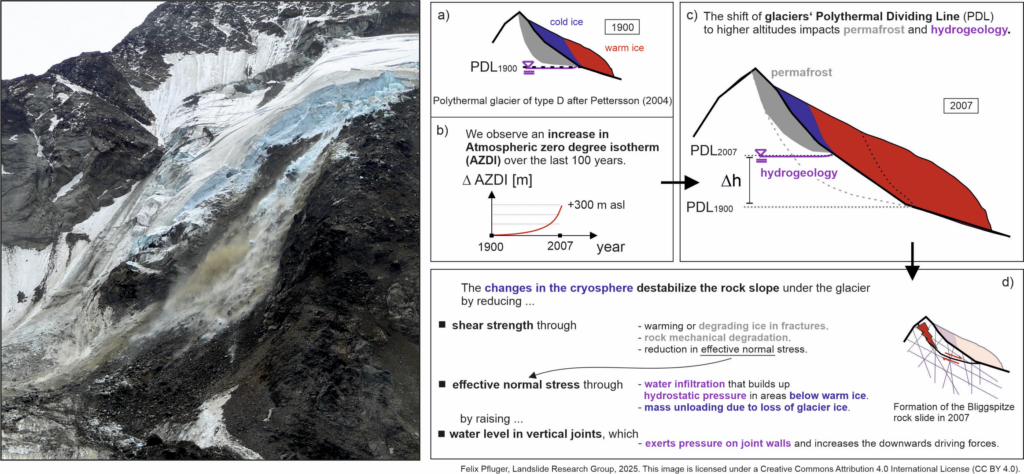New Publication out now revealing how interactions of glacier, permafrost, and hydrogeology trigger massive rock slope failures situated in the cryosphere
Do you wonder what mechanism caused the massive rock avalanche at Piz Scerscen (Bernina, CH) in spring 2024 (link to DAV-report)? Read the paper: >here<.
Felix Pfluger (TUM, funded by M³OCCA) and colleagues investigated glacier changes, conducted fieldwork on permafrost at 3200 m asl, rock mechanical laboratory studies (Joseph Steinhauser as part of his Bachelor Thesis) and mechanical modeling on a slope scale to infer permafrost–glacier interactions and their implications for triggering high-volume rock slope failures. Using the Bliggspitze rock slide as a case study (Austria, Tyrol), we demonstrate a new type of rock slope failure mechanism triggered by the uplift of the cold–warm dividing line in polythermal alpine glaciers, a widespread and currently under-explored phenomenon in alpine environments worldwide. The publication features a holistic discussion on the role of meltwater and water infiltration/migration in bedrock enabling the buildup of hydrostatic pressure that eventually triggered the rock slide.
With this research, we advance our understanding of coupled processes in complex slope failures situated in the cryosphere.
It was realized as a joint collaboration with researchers from TUM, SLF, BOKU, and FAU.

